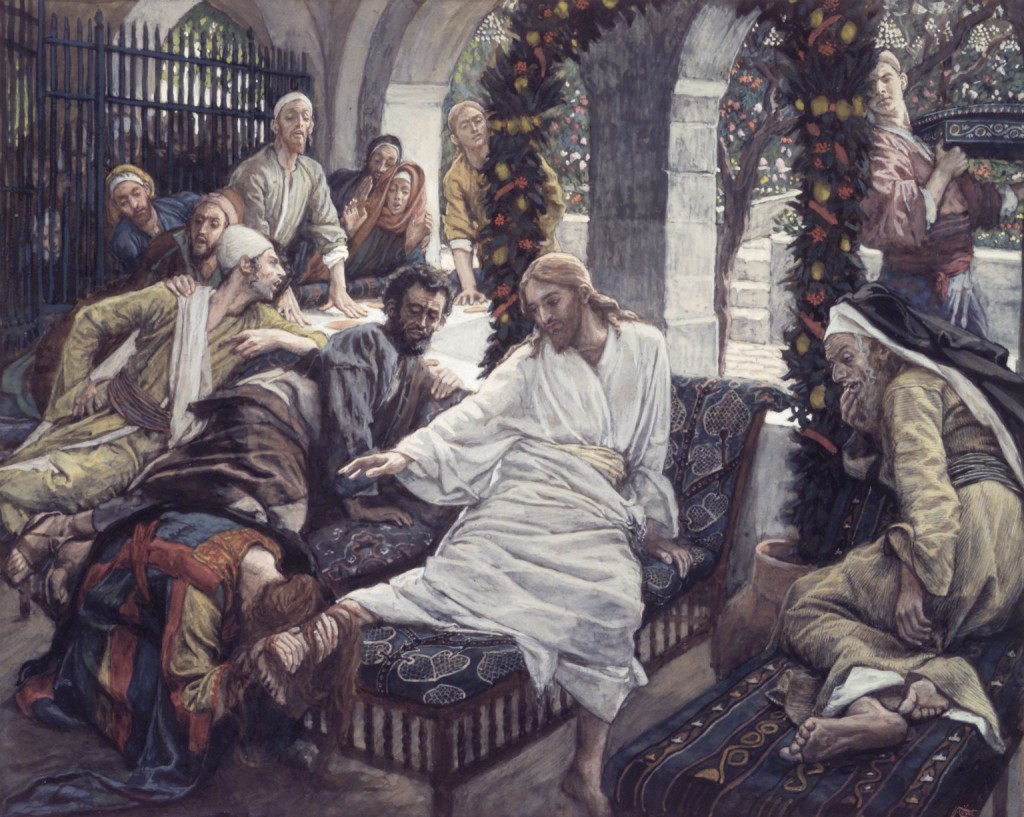
Last Sunday—the fifth Sunday of Lent—our pastor preached on John 12:1-8, when Mary anoints Jesus’ feet with costly perfume. In the silence that followed the sermon, the phrase that emerged for me was “costly extravagance.”
Mary’s gift—expensive perfume poured over Jesus’ feet and wiped off with her own hair—was certainly extravagant. The overwhelming aroma and her disarming vulnerability were extravagant enough, but it was the financial cost that Judas focused on. “Why was this money not sold and the money given to the poor?” While Judas recognized the costly nature of Mary’s act, he was not able to accept the extravagant nature of it as a gift of love to Jesus.
On this site we use costly discipleship to indicate a life lived in the way of Jesus, even when such faithfulness leads to suffering. Many times narratives of costly discipleship focus on the endurance required in the face of suffering or the pain and difficulty of living faithfully in certain circumstances. Indeed, these are certainly sacrifices worthy of recognition and retelling.
Yet the extravagance seen in John 12 also implies a kind of sacrifice, since the gift given does not arise out of excess but is carefully chosen, cultivated, and given at a cost to the giver. Perhaps costly extravagance is a particular expression of costly discipleship that surprises with acts of love, generosity, and unexpected giving, even in the midst of hardship.
Very often examples of costly extravagance exist within familiar stories of costly discipleship. Here are a few from our own collection here at Bearing Witness:
- Adi Walujo’s congregation kept their well open to the Muslims of their town, even when Muslim leaders had closed their church building. In Walujo’s words, “the water from our well was still running around.”
- Before her execution by Dutch authorities, Anna Jansz wrote a letter to her infant son which, remarkably, entreats her son to eschew fear and be generous with all who are in need. “Love your neighbor. Deal with an open, warm heart your bread to the hungry, clothe the naked, and do not tolerate having two of anything, because there are always those who are in need.”
- After Tulio Pedraza’s conversion to evangelical Christianity, the priest urged townspeople to boycott Pedraza’s carpentry business and brought in a new carpenter to replace him in the town. Yet Pedraza responded by supplying the new town carpenter with tools from his own shop.
Do you find costly extravagance to be a useful concept? What examples of costly extravagance might you add to this list?
Thank you for the artwork depicting the anointing of Jesus’ feet by Mary, and described as an extravagant act. I’m beginning a study of John 12:1-8 and was looking for a description and depiction of extravagance, hoping that passage of Scripture would be given as an example of it.